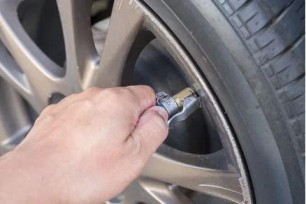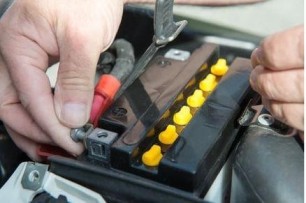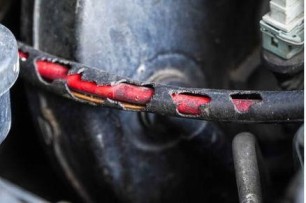General Insurance Blogs, Articles & Updates by - Magma HDI
Have us call you
- RENEW YOUR POLICY
- BUY NEW POLICY

Nitrogen or Air – What suits your car the most?
Tyre management has become a critical factor in maintaining the overall condition of cars. In contrast, we cannot control the factors such as weather and road conditions that affect the wheels. But we do have control over what goes inside them. And mind it, the type of air you choose to put in your tyres can have a significant impact. So, if you are in a dilemma about which air to put in your tyres, you are not alone. The most common argument in the debate ranges from nitrogen being the most prominent option.
Not sure! This blog guides you in choosing a side. We have put both the options under the test of several key factors and see how each one fits in. By the end of this blog, you will be able to decide which one is the right choice for you.
1. In terms of cost:
At most fuel stations you get free air refills and check-ups. In the case of nitrogen, it’s not free and will cost you around 40-50 rupees for a four-wheeler. Even if you don't get a free refill of air, it usually costs about 10-15 rupees making it cheaper than nitrogen.
2. In terms of availability and convenience:
Normal air is readily available. The infrastructure and storage systems required for nitrogen are not present in every region, thus bringing limitations in its availability in those areas.
*Pro-tip: If you have nitrogen-filled tyres and get a puncture on the road where there are no nitrogen filling stations. Inflate the tyre with air. Don't worry; it is entirely safe.
3. In terms of tyre pressure:
When inflating a tyre with nitrogen, 95% of pure nitrogen goes into it. Nitrogen offers more consistent tyre pressure because nitrogen molecules hardly ever pass through the small holes in the tyre's rubber, being heavier and bigger in size. A tyre filled with conventional air has approximately 20% less pressure.
4. In terms of fuel economy:
Consistent tyre pressure results in improved fuel economy. As we already know, the winner in terms of tyre pressure. It's clear that nitrogen is the frontrunner in terms of fuel economy.
5. In terms of weather conditions:
Water vapour in conventional air causes the tyre pressure to vary when the weather conditions change. When the temperature outside is hot, the air within the tyres expands, resulting in over-inflation. On the other hand, they get underinflated when the temperature drops.
Not only that, but water vapour in your tyre causes corrosion in the metal rim of the tyre. As nitrogen contains no water vapour, tyre pressure variations and deterioration are non-existent.
From all the above information, it is clear that nitrogen does hold superiority over conventional air. Conventional air is not a bad option either. Yes, if your car stays idle for a more extended period, using nitrogen will save you trips to the air refill station every time you take your car out.
Maintaining proper tyre pressure is a must whether you use nitrogen or air. Just like that, maintaining your car insurance is a must if you want to drive legally on the Indian roads. So before you even take out your car for a tyre refill, make sure you buy new car insurance and if you already have one, keep it up to date.
To buy new car insurance today, click HERE .
Disclaimer: The information provided above is for illustrative purposes only. To get more details, please refer to policy wordings and prospectus before purchasing a policy.

Efficient ways to extend and maintain the battery life of your two-wheeler
People have a habit of covering more miles on two-wheelers than cars for convenience and cost saving. One thing that every biker wants to know is how to extend the two-wheeler battery life. Long battery life indicates that your two-wheeler will function for an extended period compared to other vehicles.
But the battery gets examined only at the time of each servicing or repair. Nonetheless, it needs more attention than these few times. You do not have to be an expert in mechanics to look after a battery, nor do you have to make endless trips to your nearby garage or service centre. Just a few regular checks and maintenance will improve the quality of the battery in terms of enhancing life.
Let’s have a look at the ways you can extend the battery life of your two-wheeler.
1. Charge the battery regularly:
Allowing your two-wheeler battery to discharge before charging to maximum capacity is not a good idea since it will decrease its life and negatively influence its performance. Hence, regular charging of the battery is a must. You can check charge levels using a multimeter. Allow the two-wheeler motor to be idle for about 15 minutes to get adequate charge levels.
2. Top up the fluids in the battery regularly:
The electrolyte in a battery gets utilized whenever you charge and discharge it. Hence, keep it refilled with distilled deionized water. If you find dropping electrolyte levels during your check, make sure to refill it up to avoid replacing the existing battery. If you don’t top up the electrolyte after a few cycles, your battery will begin to break down. A traditional two-wheeler battery would have many openings to inspect and fill electrolyte unless it is sealed.
3. When not in use, disconnect the battery:
Plugged-in batteries lose power, and hence not practising that might help you get the most out of your batteries. If you are not planning to use your bike for an incredibly long time, it is recommended that you disconnect the batteries to avoid power loss. And when you do, make sure to keep the batteries in a warm, dry location.
4. Look for any unsecured connections:
It’s crucial to scrutinize the batteries regularly to ensure there are no loose connections. Check for connectivity issues, scratches, and short-circuits of wires regularly to avoid long-term consequences. Internal wiring connects all sections of your two-wheeler to the battery, and weak connections might cause your two-wheeler to struggle to start. Some wiring errors might result in serious problems that affect other essential parts and the functioning of a two-wheeler.
5. Don’t put too much strain on the battery:
High-capacity lighting and LEDs that you connect to your two-wheeler put a lot of loads on the battery. As a result, it may cause the battery to drain and eventually lead to its termination. Ensure that the accessories you install don’t exceed the battery’s capacity.
On a conclusive note, for the smooth performance and uninterrupted functioning of your two-wheeler, keeping the batteries up-to-date is a crucial thing. Your two-wheeler derives its power from the battery, and any fault to it can bring the vehicle to a halt. Prepare for such uncertainties much in advance by investing in the zero depreciation feature of the regular 2 wheeler insurance. Taking good care and being careful is not just sufficient. Buying suitable 2 wheeler insurance can add an extra layer of protection.
To get two-wheeler insurance, click HERE .
Disclaimer: The information provided above is for illustrative purposes only. To get more details, please refer to policy wordings and prospectus before purchasing a policy.

Reasons why underage driving is posing a threat to the lives of other commuters
Learning to drive is a thrilling moment for teenagers. Transitioning from remote-control cars to handling the steering physically boosts the adrenaline for every youth. But this situation can be daunting for the parents. Statistics suggest that parents have valid reasons to be concerned because underage drivers are more likely to be involved in a car accident than any other age group.
Teenagers have better vision, faster reaction timing, and an acute sense of hearing than adults. Then why are accidents more common in this specific age group? In this article, we share the top reasons for accidents involving teen drivers;
1. They think differently, to begin with:
Teenagers are still maturing, and their brains are highly active. Studies have shown that the part of their brain that supervises planning and controlling impulses is still developing. Hence they’re more prone than adults to indulge in dangerous activities and struggle to evaluate the consequences of their actions while driving.
2. Lacking experience:
Teenage drivers are unprepared to make the judgments that drivers must make to be safe. They are still learning the road laws, traffic discipline, and the fundamental operations of a car. Furthermore, being impulsive, as mentioned above, combined with inexperience, lead to disastrous results.
3. Distractions are everywhere:
From smartphones, talkative co-passengers (mostly peers), or the latest track by their favourite artist blasting on the music system, the list goes on for the things that distract the young drivers while driving.
Teenage drivers may be cautious and stay focused to avoid distractions in their early stages of driving. However, the more comfortable they get behind the wheel, the more likely they are to participate in activities like texting on the go, scrolling through their social feed, or searching for a song.
4. Driving under the influence of intoxication:
As they’re underage, they are not legally allowed to drink. If you think from a teenager’s perspective, the safest place to chug some beer is in the car. Driving under the influence of a substance is a significant threat to other commuters as the mistake can adversely affect the lives of many.
5. Seatbelts? Not a need:
According to statistics, youngsters take wearing seatbelts casually. This casual approach leads to injuries and increases the chances of life-threatening situations in case of an accident.
If you're a parent and reading this article, imagining such situations can make you worry. Your best bet is to create a healthy environment with your children by laying out driving rules and ensuring they follow them. Your kids often take you as an example when they drive; make sure you set a good example for them by driving responsibly. Tell them about the possible consequences of their actions and the trouble they can get into. Also, make it clear that they cannot drive without holding a valid driving license.
Many things can be taught to your young one to get started, like wearing a seat belt, avoiding speeding, especially during the darker hours of the day. To give your car additional protection, make sure you invest in good private car insurance. This will help you adhere to the mandatory laws of our country and cover your loved one in case of an accident.
Click HERE to buy new private car insurance today.
Disclaimer: The information provided above is for illustrative purposes only. To get more details, please refer to policy wordings and prospectus before purchasing a policy.

Best tips to protect your car from rodents
At some point in time, you've consciously or subconsciously imagined worst-case situations for your car, including accidents, terrible weather encounters, or theft. Ever wondered about infestation attacks on your car?
Underneath your engine, it's dark and warm - a healthy and ideal environment that suits these little creatures. The chance of your car getting infested by rodents drastically rises during these colder months as your car acts as a shield for them against predators and insulates them from the cold.
Rodents often cause significant damage to your vehicle by eating wires, defecating, creating nests, and accumulating food inside your engine. To save you from the trips to pest controls and spending your hard-earned money on repairing the damaged parts, we've put out some pointers that will help you in keeping the rodents off of your vehicle.
1. Keep your car moving:
Rodents like to make their base into cars that don't often move. Taking your car out once in a while can help. A moving vehicle won't give them the time to get comfortable, and they are less likely to make the car their camp.
2. Clean your car thoroughly:
Rodents will build their nests in places where they can readily collect food. To begin, make sure your car is free of any dropped food. Vacuum through your vehicle and collect each bit of fallen food, no matter whether it's the snack you ate while stuck in traffic or it's your dog's food. Get rid of the leftovers and trash thoroughly.
If, unfortunately, your car was already home to rodents, the scent of them remains. This creates a possibility that the same creature or someone is attracted to the smell and returns. Be sure to get rid of all the droppings, nesting material, and chewed-up debris.
3. Have an anti-rodent parking space:
Keeping food and water off your garage is equally essential. Rats like to relax and feed in locations that are dark, quiet, and appear to be safe. They dislike being in open spaces. You don't want to have any hiding spots that aren't required. You should keep grain sacks, food containers, and everything else of a similar kind away from your car and the parking spaces.
4. Keep the hood of your car open:
When your car stays parked for an extended amount of time, leave the bonnet open. Additionally, leave a light on above the bonnet during the night time. As we mentioned earlier, rodents love dark places. Keeping the engine area bright makes them less likely to settle in.
*Pro-tip: Focus some lights on your tyres and place traps beside them; this will help keep rodents at bay. Rodents generally enter the vehicle engine climbing through the tyres.
5. Insure your car against animal attacks:
Car insurance helps safeguard the car and the driver and protects against the damages caused by animals, including rodents. The stress on your pockets caused due to the repairs of chewed wires can be immense. Control it by getting comprehensive car insurance today to add value to your car!
Rodent attacks are a common problem in India that frustrates car owners. They bring in unexpected damages and financial losses and, most importantly, leave the car inoperative at the time of need. Follow these tips mentioned above to stop the activities of these little trouble makers early on. If you've already faced an issue with them, take care that you don't repeat the same mistakes.
Click HERE to get the best car insurance in the market.
Disclaimer: The information provided above is for illustrative purposes only. To get more details, please refer to policy wordings and prospectus before purchasing a policy.


